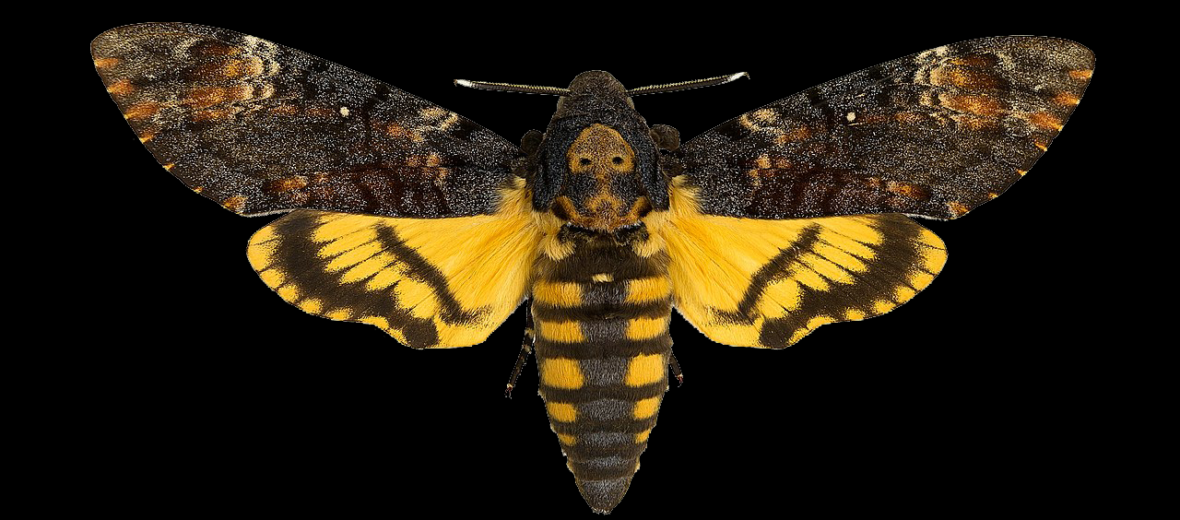
The death’s-head hawkmoth, made famous (in part) by the movie Silence of the Lambs, is a moth species that hails from Africa, Asia, and Europe. They get their name from the skull-like mark on their thorax. Due to this marking, they have a history of being considered a bad omen. There are 3 known species of these cool-looking moths. These moths are not currently evaluated by the IUCN.
First the Stats…
Scientific name: Acherontia
Length: Up to 3 inches
Wingspan: Up to 5 inches
Lifespan: Up to 6 weeks
Now on to the Facts!
1.) Their presence was thought to foretell of war, hunger, pestilence, & death to human and beast alike.
2.) They get their scientific name, Acherontia, from the Acheron, aka the River of Pain – in the underworld.
3.) The Asian species, Acherontia styx, is named after the boundary river of Hades.
4.) Acherontia lachesis is named after the Fate who measures the thread of life.
5.) Then the 3rd, Acherontia atropos – from Europe and South Africa, gets its name from the Fate that cuts the thread of life.
But wait, there’s more on the death’s-head hawkmoth!
6.) The caterpillars of all 3 species have a tail horn that changes color and curves as it matures.
7.) Caterpillars feast upon around 100 different plants. One of them being the deadly nightshade.
Did you know…?
When they feel threatened, the caterpillars will click their mandibles and try to bite their attacker.
8.) When it’s time to pupate, they will move to the ground, cover themselves with a secretion made from saliva, and burrow between 5 – 15 inches into the ground. They then shed their skin.
9.) When in their moth form, they can create an audible squeaking sound, with the help of their epipharynx, located at the base of their proboscis (tongue). The epipharynx was originally meant to suck up honey, but evolved to produce sound.
10.) These moths will actually raid honeybee hives, in search of honey.
But wait, there’s still more on the death’s-head hawkmoth!
11.) Death’s-head hawkmoths can enter the bee hive unharmed, as they secrete a scent that mimics honeybee odor.
12.) The A. atropos species is considered the fastest moth in the world. They can fly at speeds of up to 30 mph! This species can also hover, in mid-flight, while drinking nectar from flowers.
13.) The German word for them is Totenkopfschwärmer. In Dutch, they are called Doodshoofdvlinder. In Spanish, they are called cabeza de muerto. The French call them le sphinx à tête de mort. Swedish folks call them Dödskallesvärmare. Good luck pronouncing those names.
14.) Bats, owls, spiders, mice, rats, and birds of prey feed on these moths.
Now a Short Death’s-Head Hawkmoth Video!
Be sure to share & comment below! Also, check out the Critter Science YouTube channel. Videos added frequently!
Want to suggest a critter for me to write about? Let me know here.



